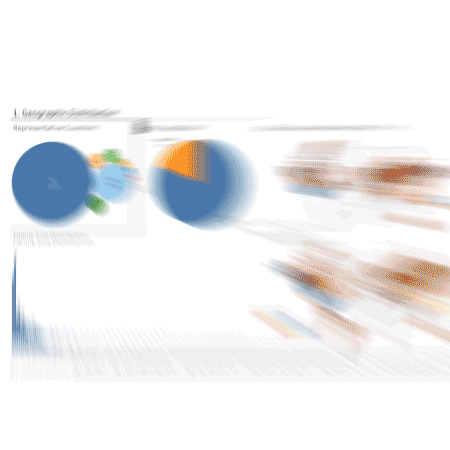Lets build a smarter IP strategy

Dynamic Dashboard Models for visualizations

Powerful result-oriented analytics

Valuable insights from industry and functional experts

Patent coverage from 100+ countries

We help you build a smarter IP strategy through some powerful analytics and interesting insights. Patents are an important source of competitive intelligence and provide valuable insights about market growth and opportunities. To stay ahead in the technology race, you need to efficiently track competitors and their IP activity. Combining our vast experiences in strategy planning and technology consulting, we take analysis of technology and competitor IP trends to a whole new level. Our aim is to convert huge-scattered technology data into strong-understandable visuals that will help you take effective business and R&D decisions and ensure a strong and a profitable patent portfolio Our patent analytics service helps you extract and exploit the value of your patent portfolios and patent information as fully as possible. We help you unlock detailed insights to help you plan and create profitable IP and Research & Development strategies. Without them, the existence of your organization could be in jeopardy.
We offer a results-driven, flexible and scalable approach that will allow you to reach your goals.
24-hour productivity capitalizing on time zone differences.

We will Answer your Questions, Scope your Project and Ensure Quality Results.
As an IP firm, We offer a results-driven, flexible and scalable approach that will allow you to reach your goals.
Empower non-technical users to take data-driven business decisions without having to learn to code.
Increase organizational efficiency through collaboration amongst multiple users.
Spend fewer hours on data analysis and compiling reports, and more on innovating on new programs and products.


Landscape dashboards are customized to provide valuable insights on specific research objectives like competitor benchmarking, investment decisions, development of future innovation R&D strategies, licensing or acquisitions, and much more.
Latest Competitor/Technology trends.
Licensing target identification.
Technology Whitespace.
Relative Growth (CAGR) in Competitor Patent Portfolios.
Hottest R&D locations & Leading Markets across generations.
Most valuable patents.

Our senior team members have worked for tier-1 Strategy consulting firms and have served Fortune 10 clients for multiple years. They are qualified from the top 30 ranked MBA institutes in the world, and top 3 in India. They are well versed with techniques to distill oceans of data into useful insights focused on specific research objectives like competitor benchmarking, investment decisions, development of future innovation R&D strategies, licensing/acquisitions and other whitespace analytical solutions.


We work on superior analytic tools like Power BI, Tableau, Alteryx, etc to gather, process and visualize unstructured data in all its forms and transform into one complete dashboard solution with relevant data connectors that break down the data silos and highlights valuable insights especially in complex IP decision making scenarios as per our clients 2019 needs.

A patent prosecution strategy is essential for any entrepreneur. With charts and visualizations that reveal the past behavior of an examiner, a law firm, or even art unit responders to US office actions, you can develop your smart prosecution strategy for patents. Nineteen queued-up graphics support successful patent defense at each phase from responding with information about how they could win over these stubborn opponents.


Through Analytics Patent tools, you can visualize existing technology and market trends for those technologies that inform your current strategy and help you understand the future trends in your market. For example, are there more competitors working with your technology? Fewer? We help you know how these points can lead to a more substantial technology game plan and future growth.

Competitive analytics is an essential tool that can help you stay ahead of the curve. It 2019s easy to get left in the dust when your competitors move and grow faster than you. You have a chance for success if you can figure out what they’re doing, and where you stand with market changes, and wisely use that information.


This new report will help you make better decisions when it comes to patent litigation. It is perfect for those looking to increase their chances of victory and find weak points in other people’s defenses, as well as identify potentially stronger players or firms working with them on a case-by-case basis.


Every organization is under constant pressure to develop new competitive products that match up with technological advancements. However, before investing in R&D, it is essential to assess the strength of the technology and understand the available market. Technology landscape analysis is an excellent solution for entering a new technology space or expanding a current business line. Trends in patent filing

Whitespaces are gaps in a technology landscape that can be used for disruptive innovation. These spaces are typically not patent-protected, and therefore they offer opportunities for new companies to enter the market with innovative products or services. With the world of technology changing by the minute, it 2019s hard to keep up with all of the new products and patents that are being released.

Competitor profiling to understand your competition and undestanding the IP strategy of your competitors means you are aware of the opportunities and threats to your market share. A competitive understanding of your competition can significantly help to make a strategy for your patent development.

An organized portfolio is essential for monetization. Conversely, large un-organized portfolios are generally under-valued, challenging to manage, and have patents with little commercial value.
The portfolio management process involves identifying the strength & weaknesses of a portfolio by categorizing patients as per the core technologies.

Many patents are filed worldwide every year, making it relatively difficult to keep track of all new patent applications in a specific industry. We can help you keep track of all new patent filings in the technology sector. You will receive regular updates after we manually screen them and only choose documents relevant to your industry.

IP Due Diligence is the systematic review of the target company’s portfolio to assess IP assets’ quantity and quality. It is done to evaluate licensing opportunities 2013 buying, selling, or M&As, and to make critical IP investment decisions. Patent due diligence is a process that can be used to determine the value of patents in your portfolio.
Business Intelligence is a powerful tool, easy-to-use. Analytics Platform delivers quick answers in a way accessible to top management and IP experts in a wide array of applications. Gain invaluable insights PatentSight Business Intelligence helps you to become more effective in managing your patent portfolio.
Business Intelligence is a powerful tool, easy-to-use. Analytics Platform delivers quick answers in a way accessible to top management and IP experts in a wide array of applications. Gain invaluable insights PatentSight Business Intelligence helps you to become more effective in managing your patent portfolio.
Yes! We have an in-house IT team capable of handling EVERYTHING ranging from internal patents 2019
database/software development to machine learning based patent ranking/watch/ searching tools.
2019t forget to ask for a demo of our IT services portfolio.
Our experienced team of patent researchers and analysts has advanced qualifications in wide ranging technology domains like electronics and telecommunications,
mechanical and metallurgy, life sciences (including pharmaceuticals, biotechnology, chemistry and biochemistry) and computer science, along with a separate team
specialized trademark and patent agents/attorneys.
Prior art is any evidence that your invention is already known. Prior art does not need to exist physically or be commercially available.
It is enough that someone, somewhere, sometime previously has described and made something that contains a use of technology that is very similar to your invention.
Prior art can be:
Yes, We provide search services in Chinese/Taiwenese/Japanese languages.
United States-13521, 58th St. SE Snohomish, WA – 98290, USA
INDIA - PatentsKart B1, Netsmartz House, IT Park, Chandigarh - 160101
Copyright © 2024 Patentskart. All rights reserved